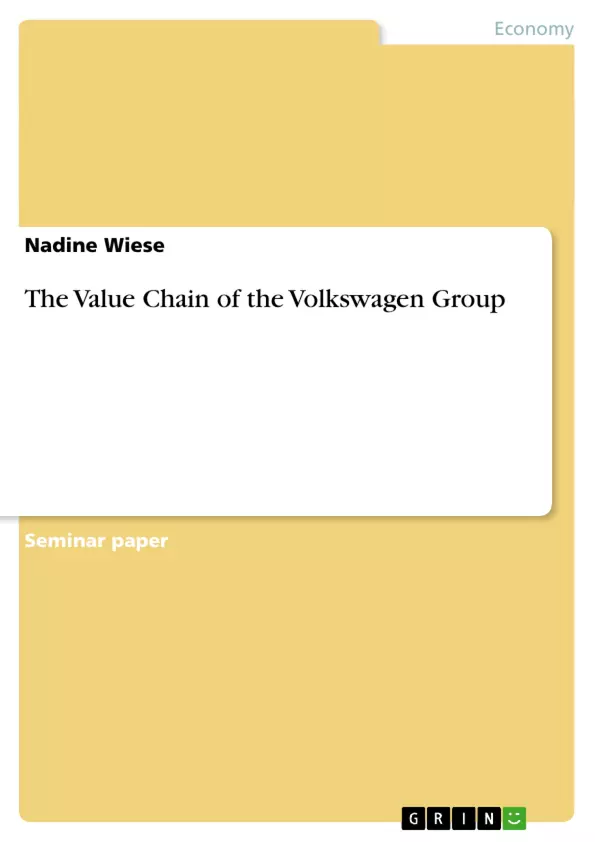The Volkswagen Group – from a company providing affordable cars for the German people to a global group producing broad-range models including premium vehicles for upper-classes.
The success of the today’s VW AG began in 1937 when VW was founded with the intention to provide affordable cars for the German people. After years of developing further models, acquisitions of other car manufacturers such as Audi and SEAT, and starting international operations, the Volkswagen Group has become the largest automobile manufacturer in Europe and one oft the leading car producers worldwide. Today there are almost 50 production plants in Europe, America, Asia and Africa. (Datamonitor 2008)
The Volkswagen AG consists of two divisions. Next to the Financial Services Division there is the Automotive Division that develops vehicles and engines, produces and sells passenger cars, commercial vehicles, trucks, buses, vans, pick-ups and campers. Brands that are part of the VW Group include: VW, Audi, SEAT, Lamborghini, Skoda, Bentley and Bugatti. (Datamonitor 2008)
Concentrating on the Automotive Division, the Volkswagen Group’s strategy is analysed by looking at its value chain. It is examined what is performed well, where strengths are that create value, and what might be improved.
Inhaltsverzeichnis (Table of Contents)
- Introduction
- The Strategy of the Volkswagen Group
- The Value Chain of the Volkswagen Group
Zielsetzung und Themenschwerpunkte (Objectives and Key Themes)
This document analyzes the Volkswagen Group's strategy and value chain, examining its competitive advantages and areas for improvement. The primary goal is to provide a comprehensive understanding of the company's operations and how they contribute to its overall success.
- The Volkswagen Group's strategic objectives and goals, particularly its ambitious plan to surpass Toyota as the world leader in the automotive industry.
- The company's approach to value creation through differentiation, focusing on quality, design, innovation, and technology.
- The role of Porter's value chain model in analyzing the Volkswagen Group's operations and identifying key activities that contribute to competitive advantage.
- The importance of efficient and effective operations in a highly competitive automotive industry.
- The strategic importance of customer nearness, top performance, added value, renewability, respect, responsibility, and sustainability in the Volkswagen Group's value chain.
Zusammenfassung der Kapitel (Chapter Summaries)
The introduction provides background information on the Volkswagen Group's history and growth, highlighting its transformation from a domestic car manufacturer to a global leader in the automotive industry.
The second chapter delves into the Volkswagen Group's strategic objectives, particularly the ambitious "Strategy 2018" aiming to surpass Toyota as the world leader. This chapter examines the group's plans for market expansion, product development, and increased sales.
The third chapter focuses on the Volkswagen Group's value chain, utilizing Porter's generic value chain model to analyze primary and supporting activities. This chapter highlights the company's focus on differentiation, its commitment to customer nearness, and the importance of value-enhancing activities in achieving competitive advantage.
Schlüsselwörter (Keywords)
This document focuses on the Volkswagen Group's strategy, value chain, competitive advantage, differentiation, customer nearness, Porter's value chain model, primary and supporting activities, efficient operations, and the automotive industry.
- Quote paper
- Nadine Wiese (Author), 2008, The Value Chain of the Volkswagen Group, Munich, GRIN Verlag, https://www.grin.com/document/138216



